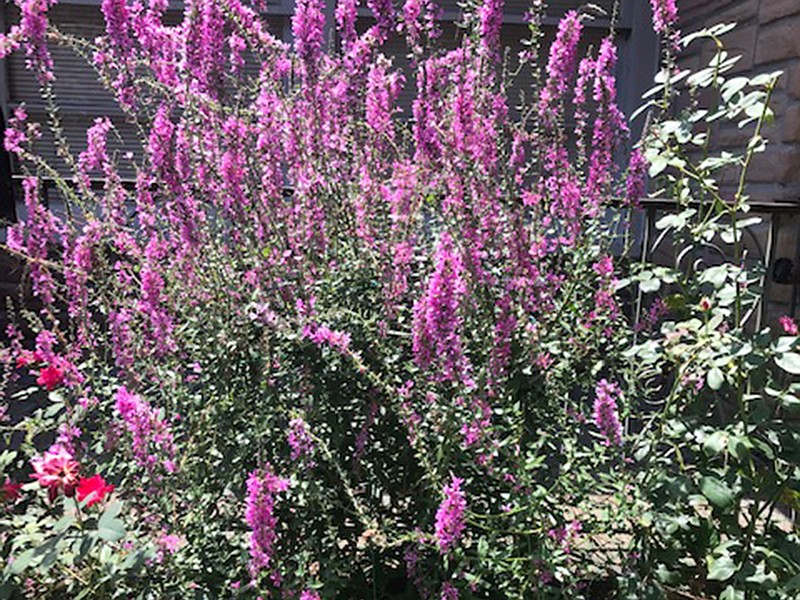Q I am writing to you on behalf of my 98-year-old grandmother. She still enjoys planting flowers in her yard. In the 1980s, her father had this flowering plant growing in his flowerbeds in Mena. He received it with an order from a plant catalog. She loved the plant, took a root home and planted it in her yard in Mena. Neither my grandmother nor her father knew the name of the plant. In 2008, she moved and brought the plant with her. The plant has thrived and each year she divides it. This year it is prolific in blooms. People stop and ask what it is and she is happy to share a root. Do you know the name of this plant? It blooms purple pink spires of flowers from spring to frost and attracts bees, bumblebees, butterflies and hummingbirds all season. It is perennial, requires no maintenance and likes moist soil. Any information you could share would be greatly appreciated.

A The plant in question is purple loosestrife (Lythrum salicaria). While it is an easy plant to grow and is a long season bloomer, it is on the prohibited plant list in Arkansas, where it is banned from being sold or planted. The plant spreads easily by seed and cuttings, and where it has escaped from gardens and has been found to clog waterways.
Q I heard a limb hit the ground last night, went out with a flashlight, but couldn't tell where it came from. Sending a picture of the leaves, etc. In the daylight, think I saw the source, thick-trunked tree overgrown with five-leaved vine ... could that have weakened it?

A The vine is actually English ivy. As it ages, it gets the more rounded, lobed leaves. It can also bloom and set seeds. Letting vines grow up the trunks of trees and out onto the limbs adds extra weight to the branches. It can also cover up problems. Removing the vines will take time and diligence. Start by cutting the vines as close to the ground as you can, and then cut them again about a foot above. Try to pull as many down as you can. It will take repeated efforts to eradicate them.
Q Last week I saw something in your column about a funny plant coming up from the foundation of a house. We also have something that I am not sure what it is. It has come up very rapidly since spring and currently is about 6 feet tall and spindly ... and since last week has started to bloom. What is this thing?


A The plant is a weed called hemp sesbania. It is an annual weed in the bean family that can grow 6 to 10 feet tall or more in one season. It produces lovely yellow pea-like blooms. After flowering it will produce a long, narrow bean pod that contains many seeds, which can self-sow and give you more next year. If you want to enjoy the blooms, cut off any resulting seed pods before they mature.
Q My bagged potting soil has gotten damp and has slight mold. I am potting succulents. Will that harm them or do I get new soil?
A I would simply spread it out and let it dry out before you use it. It has been sealed up with moisture in a plastic bag. Spread it out, turn it a few times and let it dry. Then it should be safe to use.
Q We recently bought a house with a great but unattended courtyard. A bank of azaleas is bare at the bottom with great foliage on top. I think I should wait until they bloom in spring to prune them. My question is how much? I have the same problem with lots of gardenias in the front.

A Definitely wait until spring to do any pruning, since flower buds are set or setting now for next year's blooms. It is going to be difficult to get them to fill in branches really close to the soil line. It appears the few stems you have are fairly old and woody. You can try cutting the plants way back next year after bloom and see if they fill in. There are dormant buds on old wood. Some older azaleas will come back, but some can die. If you are willing to replace if needed, take a chance. Otherwise consider planting smaller azaleas in between the others and let them grow together to form one big bush.
Retired after 38 years with the University of Arkansas Cooperative Extension Service, Janet Carson ranks among Arkansas' best known horticulture experts. Her blog is at arkansasonline.com/planitjanet. Write to her at P.O. Box 2221, Little Rock, AR 72203 or email
jcarson@arkansasonline.com
